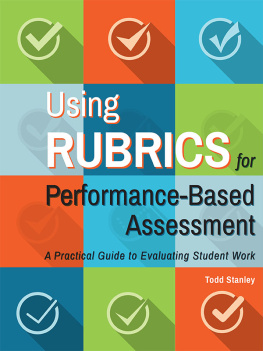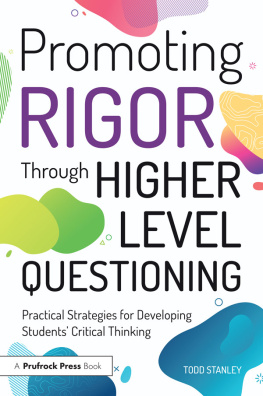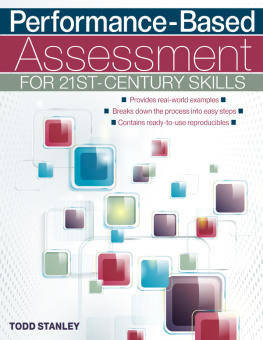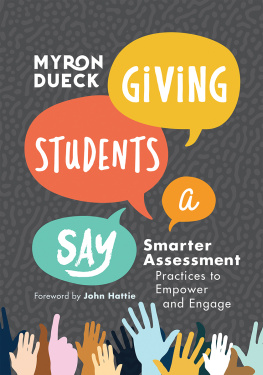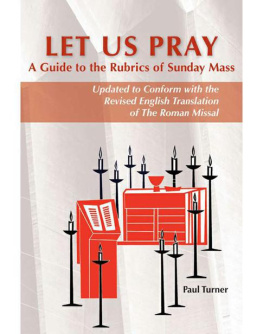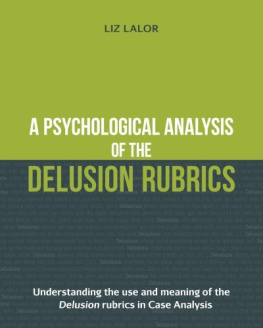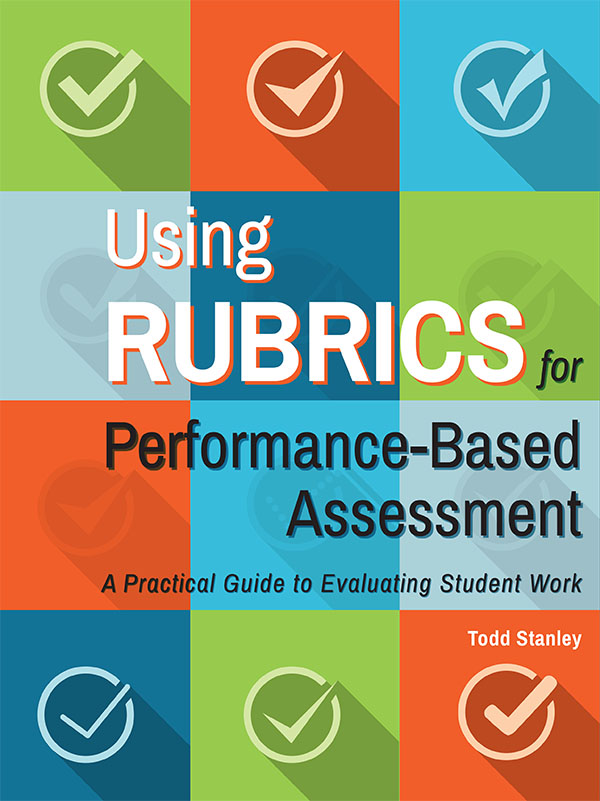


Copyright 2019, Prufrock Press Inc.
Edited by Katy McDowall
Cover and layout design by Allegra Denbo
ISBN-13: 978-1-61821-932-9
No part of this book may be reproduced, translated, stored in a retrieval system, or transmitted, in any form or by any means, electronic, mechanical, photocopying, microfilming, recording, or otherwise, without written permission from the publisher.
For more information about our copyright policy or to request reprint permissions, visit https://www.prufrock.com/permissions.aspx.
At the time of this books publication, all facts and figures cited are the most current available. All telephone numbers, addresses, and website URLs are accurate and active. All publications, organizations, websites, and other resources exist as described in the book, and all have been verified. The author and Prufrock Press Inc. make no warranty or guarantee concerning the information and materials given out by organizations or content found at websites, and we are not responsible for any changes that occur after this books publication. If you find an error, please contact Prufrock Press Inc.

| Prufrock Press Inc.
P.O. Box 8813
Waco, TX 76714-8813
Phone: (800) 998-2208
Fax: (800) 240-0333
http://www.prufrock.com |
Table of Contents
Chapter 6 Assessing Rubrics:
The Good, the Bad, and the Ugly
Introduction
The Unintended Consequences of SMART Goals
As anyone who has spent any time in education knows, there are movements that come with the field. For example, among others, there is the standards movement, the small schools movement, the college- and career-ready movement, and the movement of integrating technology into the classroom. Beyond these, one prominent movement throughout the past decade has been the educational data movement. The essential question of the data movement is What data can you show me to prove that students are learning? In the past, educators depended on subjective measures, such as grades, teacher recommendations, and graduation requirements, to determine whether a student was succeeding or not. Now the expectation is that objective measures will show educators whether a child is really learning. The goal is to convert the measurement of mastery into a quantifiable number that will prove whether or not a student is growing as a learner.
Part of this movement led to the use of SMART goals (The Mind Tools Content Team, n.d.) in education. These are goals that are:
Sspecific,
Mmeasurable,
Aachievable,
Rrealistic, and
Ttime related.
The idea behind SMART goals is to conduct an assessment that can measure growth. If the assessment determines that a student is not growing as a learner, then practices are put into place to help him or her do so.
Different groups use SMART goals to measure their success. For instance, businesses use SMART goals to increase profits, improve customer service, and increase efficiency in business operations. The medical field can look at patient visits, quality of care, and health outcomes. Sports teams use SMART goals to make players more effective, improve statistics, and set goals to improve wins. If these goals work for such organizations, why would education not want to use such a systemespecially if it is going to improve student achievement?
These goals can be used at various levels of an educational organization, from the central office setting big picture goals for the district, to schools measuring the buildings success on particular skills, to individual teachers trying to demonstrate the growth of their students, to even having students set their own SMART goals as they persevere toward new achievements.
For example, a teacher might use SMART goals in the classroom by giving a class a math test. One student misses questions 2, 4, 7, and 11, all of which have to do with fractions. This might indicate to the teacher that this student needs more intervention with fractions, so the teacher works with the student further, breaking concepts down into more understandable chunks and providing more practice. If several students in the class show a similar pattern, the lesson on fractions may need to be retaught to the whole class. On the other hand, the results of the test might show a teacher the areas in which a student displays strengths, which would hopefully inspire this teacher to find ways to challenge the child by learning about the concept in more depth.
SMART goals sound great, but here is the problem: SMART goals seek to get to an unbiased, cold hard fact that indicates the mastery of a student. Either the student mastered the objective or he did not. How black and white can you get? To make the evaluation of mastery as objective as possible, providing questions with one correct answer seems logical. This eliminates the subjectivity of open-ended questions that have multiple possible answers and are subject to interpretation. Having one correct answer to a question avoids the problem of one teacher evaluating a students response one way, while another teacher might see things differently because there is so much discrepancy in what may be considered mastery-level work. This is why most state assessments use mostly, or all, multiple-choice questionsbecause the testing coordinators do not have to train evaluators to be as unbiased as possible.
In the classroom, this might involve a teacher writing a 10-question multiple-choice test to determine whether students understand proper sentence structure. One student gets eight of the questions correct. This student displays mastery of the skill, perhaps only requiring a brief review of the two missed questions. Another student gets only three of the questions correct, showing a lack of mastery of the skill, requiring intervention. These examples are objective uses of data. A multiple-choice test is easy and quick to gradethe answers are clear.
Although this is the ideal way to assess mastery in an ideal world, and certainly the easiest, there are certain skills that are more difficult to objectively measure, such as public speaking. After all, how does one rate a student in public speaking? If you are rating a performance, there is a lot of interpretation that can take place. One person might think the student spoke very well, while another might have seen some issues. Because this rating is based on opinion, many would argue that this type of assessment does not invoke the tenets of SMART goals. Otherwise, everyone who evaluated this student would decide the same result. Also, the amount of time it takes for the student to give his or her speech and for the evaluator to rate it is much more involved than other more objective forms of assessmentand time is one of those things in todays world of content standards that teachers do not have a whole lot of. So, if you are trying to create an objective and easy-to-grade assessment, a logical choice would be a multiple-choice test. A student could have the following question on an assessment:
Which of the following is the best way to present a speech to a crowd?
a. Reading from your notes word for word
Next page
